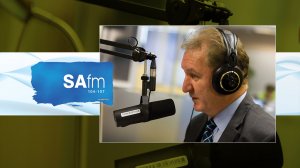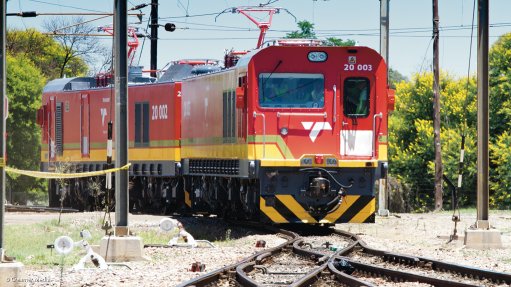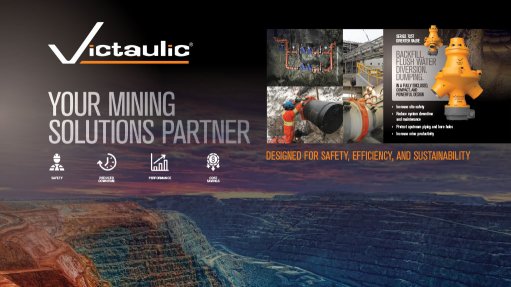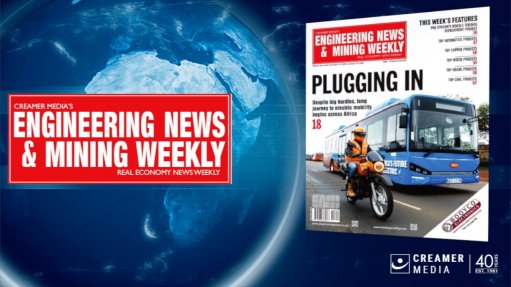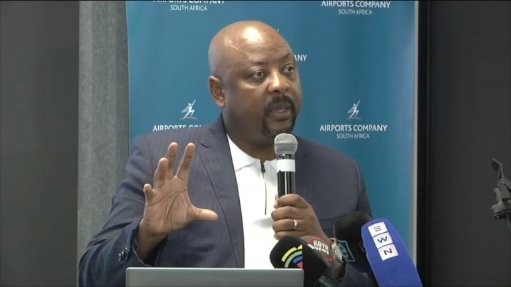On-The-Air (18/08/2017)
Every Friday morning, SAfm’s AMLive’s radio anchor Sakina Kamwendo speaks to Martin Creamer, publishing editor of Engineering News and Mining Weekly. Reported here is this Friday’s At the Coalface transcript:
Kamwendo: Anglo American is going all out to unleash end-to-end innovation across the length and breadth of global mining.
Creamer: It is really a new mindset now and this is about sustainability, because if you don’t start changing the way you mine now, you are not going to mine. We see that the waste we have to bring up with mining has grown about 16 times from what it was in 1900. If you look at the copper situation just to get 40 kg of copper you have got to use double the quantity of water. Effort is now being made to look holistically.
They are searching for technology, but the technology is there. Although the mines have been terrible laggards when it’s come to technology and they have not been going forward because their plant investment has been for half century at a time and they haven’t wanted a change, they have seen that other industries have now gone ahead of them.
Other industries have developed technologies that can be used in mining and it goes from medical technology to automotive engineering technology. They are able to absorb it but the biggest thing is data science and the IT to make sure that they can get exact precise removal of materials so you cut down on waste.
They are targeting the orebody and making sure that they work in a smaller way there. You don’t take out what you don’t need or get any return for. They are even looking at swarm robotic mining and that can be compared to locusts devouring a field or armies of ants independently executing tasks.
We see that the agricultural industry has already got robots that plant the seeds. Now mining is thinking that they can get the swarms of robots that can actually mine the orebody so precisely that you don’t end up with all this expensive waste that you don't use, which costs so much to transport.
They are also becoming less fastidious about the ownership of the technology. In the past if you just looked at a mine they would say we own this intellectual property, you realise you are working with us, but whichever supplier, we own that intellectual property. They have become less insistent on that and they are sharing the innovation and saying we can perhaps get a few discounts if we really put a lot of effort into this. We don’t want to dominate and own anymore.
They are also going smaller, they are thinking smaller and modular. Don’t put in a plant for 50-years, put in a plant that is a smaller modular plant and if technology changes, like you change your cellphone every three years and a new car every four years, if the technology changes you don’t have a massive plant now in which you invested so much and you just have to keep going to get your return.
You can now have a second module with a different type of technology that is more advanced. All-in-all when I say end-to-end it is not only innovation when it comes to technology; it is also innovation when it comes to dealing with the communities, environment and host governments.
There is a fear that the technology change might be blocked by host governments, because there can be job implications and there may be situations where host governments say just carry on doing what you are doing, because to change is too drastic. They want to work on a persuading of the communities, bringing the communities in, but also host governments, realising that there have to be new regulatory frameworks that are set in place to modernise mining.
They are looking globally, it is not only South Africa. You can see them in South America they are putting up these plants. Of course, Anglo American itself are looking at its platinum mines here and how it can do better. Just on the presorting of ore, you can put a bigger throughput of pay through your plants and double output.
There are all sorts of thinking going on to be waterless as well, because they can’t use the amount of water that they are using. Instead of grinding down the material coarse particle recovery is now being considered so you don’t grind the material down to 170 microns when you can deal with 500 microns that use much less water and create far more throughput for your plant. So, it is a multiplicity of different ideas going through, because they know that this has to happen for mines to be sustainable.
Kamwendo: Harmony Gold has taken a decision to plough billions of rands in two of its Free State gold mines.
Creamer: I was very pleased Harmony Gold, against this background of uncertainty in South Africa here, they are looking long and that is what you have to do in mining. Mining looks long. Governments and Ministers come and go, but your mine will be there.
I know a lot of the people that mine in Africa, when they interface with the government, one of the first things they say is that our mine will still be there when your government has changed, so make sure you have a system that is sustainable and benefits the population when you have gone.
We have to think like that in South Africa as well. It was good to see Harmony looking long and saying they are going to spend more capital in this financial year then they spent last year, because it is important to look long in mining. They want to increase their capital expenditure to R2,7-billion from R2,3-billion last year.
A lot of it is going to go into the two Free State mines, which are going to combine their activity. That is Phakisa and Tshepong in the Free State, where they want to bring these together so that one and one makes more than two. Thinking going around this is also looking at their Papua New Guinea situation.
They are in Papua New Guinea now. Patrice Motsepe’s African Rainbow Minerals has got 14% of Harmony Gold. This Harmony Gold now is very big in South Africa, but also growing very substantially in Papua New Guinea. One of the points made by Peter Steenkamp, the CEO, yesterday, is that the Papua New Guinea government makes you want to invest there. They are very investment friendly.
The systems that they offer you are workable and you want to invest. That is why Harmony Gold is very happy with their investment in Papua New Guinea. Although Harmony Gold has always been so closely associated with South Africa you can see that people have to be thinking globally now, because of the different policy situations that crop up.
Looking there, they are seeing that they won’t only mine gold and the gold is rich there, but they will also have the benefit of mining copper at the same time. We know that is a very important metal as we go forward in the modern world.
Kamwendo: New technology could inject new life into South Africa’s rich gold basin.
Creamer: Our gold basin, we sort of say it is mined out. There is still 1.3-billion ounces of gold there. That is almost as much gold as has been mined since 1886. Why they say it is mined out, because under current ways of mining, you can only get about 200-million more ounces.
We should be putting our heads together to work out how we can get that trillion dollars’ worth of gold sitting there out. Some of it is quite deep, but deep can be cheap if you get the right technology. Also, there are safety issues, but again, it is this new technology aspect and the reef boring that is being considered to take the gold and only the gold is one of the aspects.
Of course, with three dimensional printing coming in, non-explosive mining technology coming through, you can fragment the rock in a way that we can still benefit from all this gold under the ground that we won’t get unless we change our mindset.
Kamwendo: Thanks very much. Martin Creamer is publishing editor of Engineering News and Mining Weekly.
Comments
Press Office
Announcements
What's On
Subscribe to improve your user experience...
Option 1 (equivalent of R125 a month):
Receive a weekly copy of Creamer Media's Engineering News & Mining Weekly magazine
(print copy for those in South Africa and e-magazine for those outside of South Africa)
Receive daily email newsletters
Access to full search results
Access archive of magazine back copies
Access to Projects in Progress
Access to ONE Research Report of your choice in PDF format
Option 2 (equivalent of R375 a month):
All benefits from Option 1
PLUS
Access to Creamer Media's Research Channel Africa for ALL Research Reports, in PDF format, on various industrial and mining sectors
including Electricity; Water; Energy Transition; Hydrogen; Roads, Rail and Ports; Coal; Gold; Platinum; Battery Metals; etc.
Already a subscriber?
Forgotten your password?
Receive weekly copy of Creamer Media's Engineering News & Mining Weekly magazine (print copy for those in South Africa and e-magazine for those outside of South Africa)
➕
Recieve daily email newsletters
➕
Access to full search results
➕
Access archive of magazine back copies
➕
Access to Projects in Progress
➕
Access to ONE Research Report of your choice in PDF format
RESEARCH CHANNEL AFRICA
R4500 (equivalent of R375 a month)
SUBSCRIBEAll benefits from Option 1
➕
Access to Creamer Media's Research Channel Africa for ALL Research Reports on various industrial and mining sectors, in PDF format, including on:
Electricity
➕
Water
➕
Energy Transition
➕
Hydrogen
➕
Roads, Rail and Ports
➕
Coal
➕
Gold
➕
Platinum
➕
Battery Metals
➕
etc.
Receive all benefits from Option 1 or Option 2 delivered to numerous people at your company
➕
Multiple User names and Passwords for simultaneous log-ins
➕
Intranet integration access to all in your organisation



